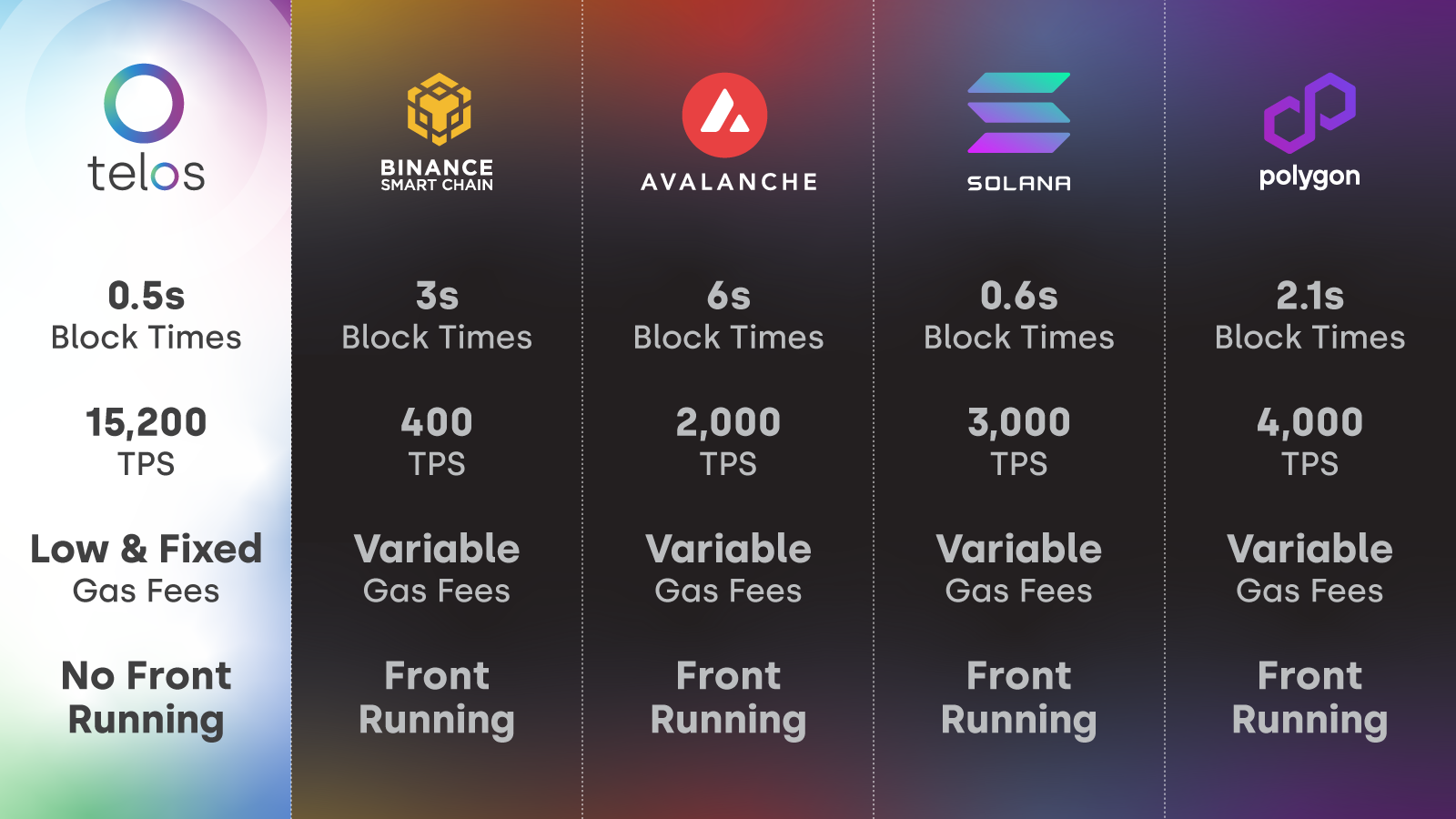Getting Started With Telos
Welcome to the Telos Ecosystem! Dive into this comprehensive guide to kickstart your journey. As the ecosystem evolves, so will this document, ensuring you always have up-to-date insights at your fingertips.
An Introduction to The Telos Ecosystem
The Telos Ecosystem consists of two chains, Telos EVM and Telos Zero. Telos EVM is our world-class Ethereum virtual machine (EVM) and is the fastest EVM on the planet with a remarkable 15,200 transactions per second (TPS)—that's over 10,000% faster than Ethereum!

Distinctive Attributes Telos Provides
Distinctive Attributes Telos provides


Uptime
Operational integrity of the Telos network has maintained a 100% uptime since December 2018 without any breaks, forks, or outages.


No Front Running
Telos is architected not to have a mempool and allows for transactions to be processed on a 'First in First Out' basis, eliminating the ability for transactions to be front run.


Transaction Finality
Transactions are finalized in just over 2 minutes, blocks are irreversible after 1.5 minutes


Transaction Throughput
.5 second block times. It takes half a second to complete a transaction.


Security
DPOS consensus mechanism provides strong security protection against a 51% attack. Telos requires 2/3s + 1 of the validators to sign blocks.


Fixed Gas Rate
Telos Gas Fees average .01 per transaction. In addition, gas fees do not fluctuate with network volumes. As a result, costs are more predictable and affordable for users and infrastructure.


Sustainable
Low carbon footprint. A typical transaction currently only consumes 0.000001 kWh to execute.


Smart Contract Support
Developers can build smart contracts on Telos in multiple languages, including Solidity, C++, Go, and Rust. This makes Telos the most compatible and versatile blockchain to build on (Additional language support to be added soon).
Understand The Differences Between Telos EVM and Telos Zero
Telos EVM makes it easy to interact with the Telos Network, acting as an interoperability layer to Telos Zero. Because of its ease of use, Telos EVM benefits from a large developer community and user base.
- Ease of Use: Familiar Web3 development and use thanks to our EVM architecture.
- Effortless Transactions: Forget the tension of long wait times. Transactions on Telos EVM are near-instantaneous, letting you focus on what really matters.
- Uninterrupted Gaming: For gamers, the Telos EVM provides a seamless, latency-free playground. Elevated speed isn’t a feature; it's the standard.
- True Microtransactions: Forget the impracticality of small payments on other networks. With Telos EVM’s low, fixed gas costs, microtransactions aren't just feasible—they're effortlessly smooth.
- More Savings, More Value: Reduce your spending on transaction fees and keep more of your hard-earned money, thanks to Telos EVM's incredibly cost-effective fixed gas pricing.
Telos Zero is the base layer of the Telos Network. It’s our game-changing Layer 0 solution that redefines blockchain governance, scalability, and utility. No longer do you have to choose between governance and performance, or make sacrifices for interoperability. With Telos Zero, you get it all—wrapped up in an ecosystem optimized for both developers and users.
- Governance that Listens to You: Your Voice, Your Network. Exercise your voting power with TLOS to influence network upgrades, Block Producer elections, and even the future of the protocol itself. Decentralized democracy at its finest!
- Seamless Cross-Chain Interoperability: Utilizing Antelope's revolutionary IBC technology, Telos Zero elevates the standard for cross-chain interoperability, deepening decentralization and paving the way for a trustless revolution.
- A Developer's Dream Playground: Telos Zero is designed with developers in mind! Enjoy robust full-stack software maintained in-house, along with the power of WebAssembly. Whether it's C, C++, RUST, or TypeScript, our WASM runtime caters to all. Start building smarter, faster, and more secure applications today.
Now that you understand the distinction between the two chains, let's get started and create a wallet. Please note that this guide is primarily focused on the Telos EVM chain for the time being.